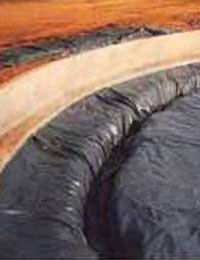 Of all of the ways to build your own pond using a flexible pond liner gives you the most freedom to decide its eventual depth, shape and contour allowing you to tailor the finished pond exactly as you want it. It is also much easier to transport home in the average family car than a rigid pre-formed shape – especially in the larger sizes. However, not all pond liners are the same – there are several different types commonly available, each with its own benefits and limitations – so it pays to pick the right one.
Of all of the ways to build your own pond using a flexible pond liner gives you the most freedom to decide its eventual depth, shape and contour allowing you to tailor the finished pond exactly as you want it. It is also much easier to transport home in the average family car than a rigid pre-formed shape – especially in the larger sizes. However, not all pond liners are the same – there are several different types commonly available, each with its own benefits and limitations – so it pays to pick the right one.
The most frequently seen on sale are made from polythene, PVC, EPDM or butyl and come in a variety of thicknesses, quality and price. In many ways, the choice comes down to your budget and what sort of pond you are hoping to make. While smaller ponds can successfully be lined with polythene or PVC – which are much cheaper – the liner lifespan tends to be significantly shorter, it is far more prone to tearing and cannot easily be repaired. For larger ponds – or when long-life and resistance to damage is a priority – a liner made from either butyl or EPDM is the only real choice. Although they are considerably more expensive than the alternative types, when laid in accordance with the manufacturer’s instructions, they are usually covered by a lengthy warranty period – often 30 years or more – and some brands are even guaranteed for life.
Polythene and PVC
It is important to take great care when choosing liners made from either of these materials as there are many brands on sale and the grade and quality differs enormously. While the best are certainly up to the job and some carry guarantees of 15 or 20 years against manufacturing defects, other types are more akin to dustbin liners, making them cheap but definitely to be avoided.
Very heavy duty polythene sheeting offers a practical way to produce a small to medium water feature and is priced attractively; though it will not give the length of service of butyl or EPDM, if that is not important, then it can be a useful route to the low budget pond. Be careful, though – it is easily damaged and tears are almost impossible to fix.
PVC offers better flexibility and durability than polythene while retaining a price advantage over butyl. Dependent on the brand, the heavy duty sheeting – typically around 0.5mm thick –often comes with a 25 year guarantee. However, if you need a liner larger than around 50 square metres, then bear in mind that the warranty drops to only 15 years for the larger sizes. While 50 square metres may sound huge, it is only enough for a circular pond around five metres across and 80cm deep – a good-sized garden pond, certainly, but hardly a boating lake!
Butyl and EPDM
“Butyl” is sometimes used as a generic catch-all description for any high quality rubber-like liner – which can obviously cause some confusion. Genuine butyl – sometimes sold as Swedish Butyl or Varnamo Trelleborg Butyl – is a natural rubber product and has a slightly textured appearance, while the synthetic EPDM – the likes of Aqualast Rubber or Firestone Liner – is smoother and feels more elastic to the touch. Making the distinction has become a little more difficult of late, since some of the latest EPDM liners have been made with an embossed surface to mimic the look of natural butyl. However, fortunately in practical terms, there is really very little to chose between them – both are truly excellent liner materials and can be repaired relatively easily. Butyl comes in two thicknesses – 0.75mm and 1mm, while EPDM tends to be available only as 1mm thick.
Properly installed, these liners are the best there is – but unsurprisingly, that sort of quality and durability does not come cheap.
Selecting the right flexible liner often becomes a bit of a “horses for courses” decision. All the commonly available materials have their uses – and their drawbacks; in the end, it really comes down to how much you want to spend and how long you want it to last. That said, whatever sort of water feature you are building, it is always wisest to buy the best quality you can, if only to safeguard your investment of time and hard work – re-lining a pond which has developed a leak and cannot be repaired is a soul-destroying task to say the least!
Last Modified: May 12, 2023












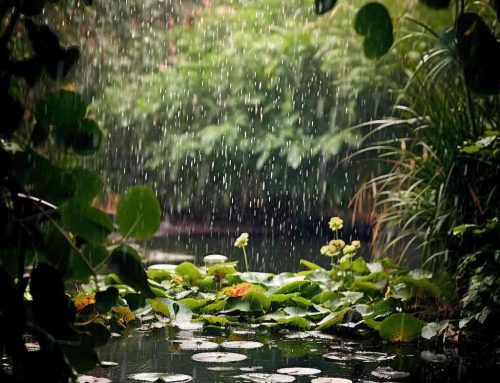
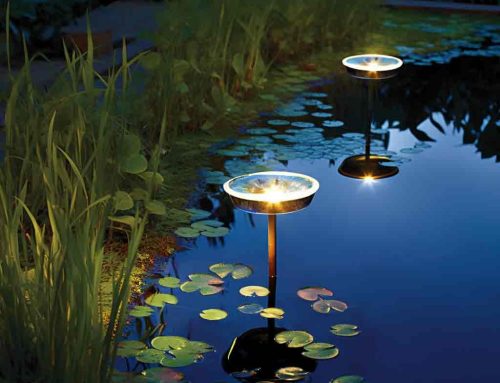
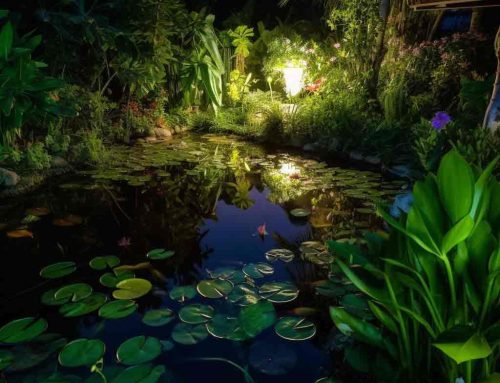

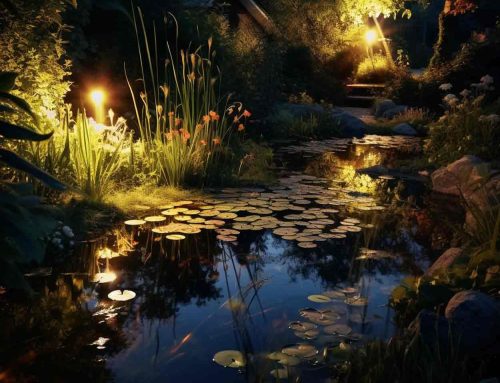



Hi, Just just read your articles about liner types. What appears to never be mentioned when talking about EPDM is the lack of chemical resistance it has,or said another way, the amount of chemicals that can attack it. I want to use EPDM on my cascading water fall but can’t find a suitable adhesive to adhere/seal gaps between rock and liner. Also I need to join EPDM to an old liner I believe may be polythene or PVC. I’m not sure there’s any flashing tape or adhesive sealant that can be used safely on both kinds of liners. Any insight on these matters would be greatly appreciated!!! Thanks Tim
Hi Ive a 3mx3mx1.5m pond Butyl/flexi lined My neighbour has just donated me 10massive koi(i already had 9 of my own upto 24″) and feel i need to expand my pond Can this be done easily,and join liners etc, or just dig a much larger 2nd pond adjacent to it for these 36″-49″demons of the deep?
hi. I am building my own pond and cannot seem to find the flexible pond liner. I made my hole and now i need the black plastic to drop into the hoke. Please advise where i could get this in south africa cape town. What should i ask for when searching.
I am planning a large pond 6x4m. Thinking concrete is the best option. It will be close to the house is there a risk of water leaking out into foundations of the house?